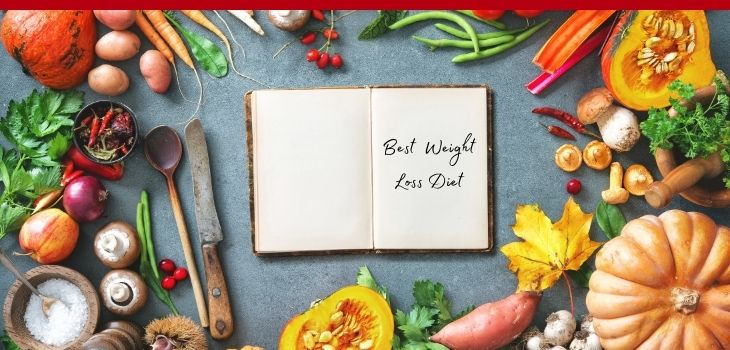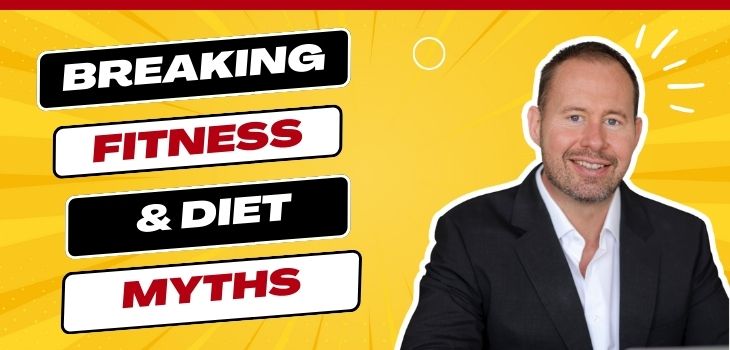In this article, I break down the best science-based diet principles for losing weight healthily and effectively.
You are about to get super-valuable information that people usually pay me for, free of charge.
This is the life-changing material that I teach my coaching clients, who include celebrities, entrepreneurs, and high-achievers.
And it has the potential to change your life, just as it has theirs (and mine).
Bottom line: this works!
If you prefer to listen to this article, instead of reading, please press Play below.
How I Discovered These Science-Based Principles
In my thirties, I got fat.
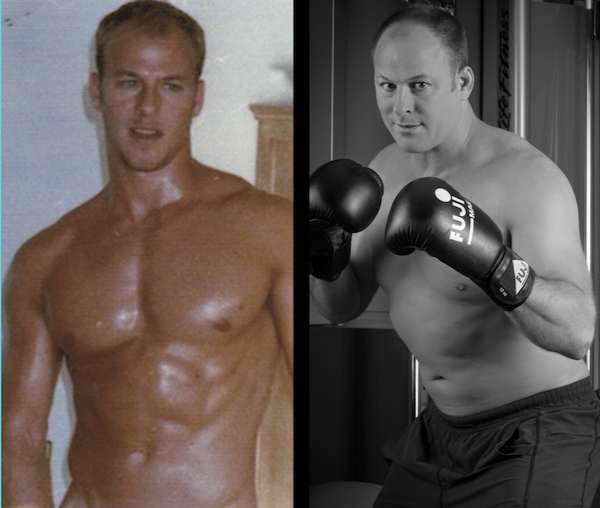
At six feet tall, I was weighing 210 pounds with body fat levels of 24%. According to body mass index (BMI) measurements, I was overweight, but that wasn’t the worst of it…
Although never diagnosed with sleep apnea, my own snoring was waking me up at night!
I slept terribly and felt stressed, irritable, and on edge all the time. My energy levels were low, half of my clothes didn’t fit, I did not feel like myself, and…
I was deeply uninspiring for my clients.
My biggest problem – believing a ton of nutrition misinformation.
I had tried following what the gurus said to do. I cut carbs, avoided fruit, put butter and coconut oil in my coffee (because fat doesn’t make you fat), and skipped meals, and on and on.
I mistakenly believed that I could do super-hard 20-minute workouts, burn so many calories/minute and take advantage of the afterburn effect.
(According to the afterburn effect, you continue to burn calories after a hard workout because of the intensity. However, we now know that this is not as big of a deal as once thought.)
Yes, hard workouts burn more calories per minute than easier ones, but you do not burn so many calories that you can get away with 20-minute workouts a few times a week if you expect dramatic, transformative results.
I needed a program that worked and got results as fast as possible while improving my health. And I did not have one!
Despite 18 years in the industry, I had to admit that I didn’t know how to change my body.
Once I accepted that hormones – which I had blamed my fat gain on – were not the problem (I even had a hormonal test to prove this), I was able to figure out what really worked.
So, I checked my ego, accepted I didn’t know what I was doing and, looked for someone who did from whom I could learn.
Gurus were ditched and the science and research were studied and implemented.
And in six months, I went from 210 pounds at 24% body fat to 180 pounds with below 10% body fat.
What follows is the program I used to get there – along with the improvements I made to it while working with dozens of coaching clients.
If you follow what I teach you here, you will get better results than you have ever experienced with any diet you’ve tried because this is NOT a diet.
And because it isn’t a diet, it is easier to follow than any diet you have tried.
Skeptical? No problem, I love a challenge!
Let’s get started! Here are the six steps in this program to lose weight fast and healthily.
6 Steps to a Healthy Weight Loss
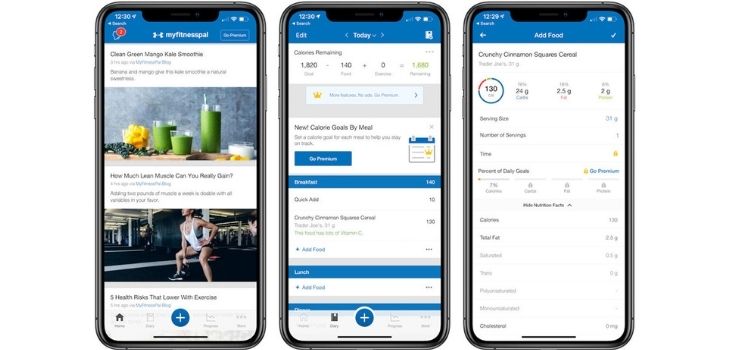
Step #1a – Download MyFitnessPal
As the management guru Peter Drucker said: What gets measured gets managed.
If you do not want to use MyFitnessPal, I get it – I was resistant to downloading it at first.
Keeping track of calories and macronutrients sounded like a lot of work, but as I discovered, doing it in the right way is a game-changer.
Knowing the numbers is the key to losing weight successfully. Without tracking, you have no idea if you are eating 2000 calories or 5000. (You might think you know, but trust me, you don’t.)
So, even if you have tried it before and are skeptical, go ahead anyway and complete this first step.
Go right now to MyFitnessPal and download it. Come back to this article when you have it, and move onto the next step.
Step #1b: Set Up Your Profile
When setting up your profile, MyFitnessPal will ask the following questions regarding your weight goal and how fast you want to lose weight:
- What is your weight?
- What is your goal?
- Do you want to lose or gain weight?
- How fast do you want to lose weight?
It will then provide you with some numbers, including your recommended daily calorific intake. I want you to ignore them all!
Why? Because MyFitnessPal sets you up to fail. People get horrible results when they use MyFitnessPal on their own because they do not know how to set their numbers for themselves.
We are going to do it the right way.
Step #1c: Upgrade to Premium
Upgrading to Premium will make your life easier.
If you use MyFitnessPal as I suggest, you will get the best results and have the best learning experience. And that is key.
You will learn important things that you need to understand. Even if you think you know a lot about nutrition, you will be surprised at how much you don’t.
So that is Step 1 accomplished. MyFitnessPal is on your phone, your profile is complete, and the Premium upgrade is in place.

Step #2: Determine How Many Calories You Will Eat Per Day
As I said in Step 1, MyFitnessPal will tell you how many calories to eat, and we will ignore those numbers.
The number one thing you need to know to lose weight and unwanted body fat is how many calories you take in versus how many you burn.
I used to rail against this. I thought it was outdated. And then I got fat.
The truth is this – to lose weight, you must take in less than you burn. If you take in more than you burn, you gain weight.
You might be thinking: I love working out, so I would prefer to burn more calories with exercise. I’ll skip the whole calorie tracking thing, if you don’t mind, Ted.
But here is the problem: burning more calories with exercise is like trying to empty a swimming pool with a bucket!
You can do it, but it is going to take more time and effort than you probably have.
Exercise is great, and it helps burn off calories. But it is a lot easier to adjust the amount of food you eat rather than trying to burn it all off with exercise.
Tracking calories works, period!
You need to know how many calories on average you are eating in a day and a week – it is fundamental to fat loss nutrition. Without this vital information, people struggle to lose fat.
The great news is that we will fix this gap in your knowledge, and we are going to use a super-simple formula to do it. Here it is:
Your Body Weight in Pounds x 10 = Your Starting Calories for Fat Loss
(If you are overweight or obese, this is a solid place to start.)
Once you have your starting calories, plug them into MyFitnessPal.

Step #3 – Determine How Much Protein You Will Eat Per Day
As you will see, you will be able to eat the foods you are already eating. Yes, you will have to eat more of some things and less of others, but you will not have to change the foods you are eating (at least, not right now).
Increasing your protein is one of the easiest things you can do to lose the most fat in the shortest time.
Why? Because protein has three major benefits for fat loss. It can help by:
- Maintaining, even building, muscle mass when you are in a calorie deficit.
- Keeping your hunger satisfied. If you are hungry, you are going to lose the fight.
- Increasing calories burnt through the thermic effect of feeding.
When your body functions, it uses energy. Just as exercise requires energy, so does the process of digestion.
About 10% of the calories you eat in any given meal get burnt up in the digestion of the meal.
Protein digestion can bump that up to beyond 10, 15, to even 20 or 30% of what you eat if you are eating a very high protein meal.
So while your calorie intake may be the same, you are burning more through the digestion process.
It may sound like a small thing, but this demonstrates how protein is powerful for changing your body.
And because research has worked out solid starting points for most of us, we don’t have to guess how much protein to eat.
To work out your range of grams per day of protein to eat:
- Convert your body weight into pounds
- Plug it into one of the following formulas (which one will depend on your weight)
If you are overweight or obese, you want to aim for 0.5-0.7 grams per pound of body weight per day.
Here is how to work out your range of protein allowance per day if you are overweight or obese:
- Your Body Weight in Pounds x 0.5 = Grams Per Day of Protein (minimum)
- Your Body Weight in Pounds x 0.7 = Grams Per Day of Protein (maximum)
If you are a healthy weight, your range can be anywhere from 0.7-1.1 times your body weight, in pounds. Here is that formula:
- Your Body Weight in Pounds x 0.7 = Grams Per Day of Protein (minimum)
- Your Body Weight in Pounds x 1.1 = Grams Per Day of Protein (maximum)
Write down your numbers.

Step #4 – Decide Your Daily Grams of Carbs and Fat
Quick re-cap:
- In MyFitnessPal, you have your calories (your body weight in pounds x 10)
- You have worked out your protein range using the formula above
You can now use your remaining calories for your carbs and fat.
Studies for fat loss show that it doesn’t matter how we divide these up. You can go lower with fats and higher with carbs, or vice versa.
What does matter is your personal preference.
If you try to cut carbs because an online influencer said they’re bad for fat loss but you struggle when cutting them out – have low energy, cravings, and your brain is full of fog – you are making things unnecessarily hard.
The same thing goes if you prefer fat over carbs. If you enjoy eating more fat and want avocado and fattier cuts of meat, go for it! Just be sure you can stick with it – this needs to become a lifestyle, not a quick fix.
Quick fixes will lead you to the same dead-end that so many people find themselves in over and over.
Bonus tip:
When it comes to tracking and setting your carbs and fat, set them equally, but only pay attention to the protein and total calories. Stop worrying about going over your fat or carb allowance.
The two things to ask yourself are:
- Did I hit my calorie target within plus or minus 100 calories?
- Did I get close – within 10-20 grams or so – to my protein target?
Focusing on those two things will make this easier than if you get overly concerned with the details.

Step #5 – Choose Satiating Foods
One of the most crucial factors in making your nutrition plan doable is beating hunger.
To do this, you need to choose the right foods – foods that help with hunger.
The University of Sydney, Australia, carried out some ground-breaking research, testing the hunger-quelling properties of different foods. They then created the Satiety Index, which listed the satiety (hunger-quelling) effects of those foods.
You can see some of what they discovered on the graph below:
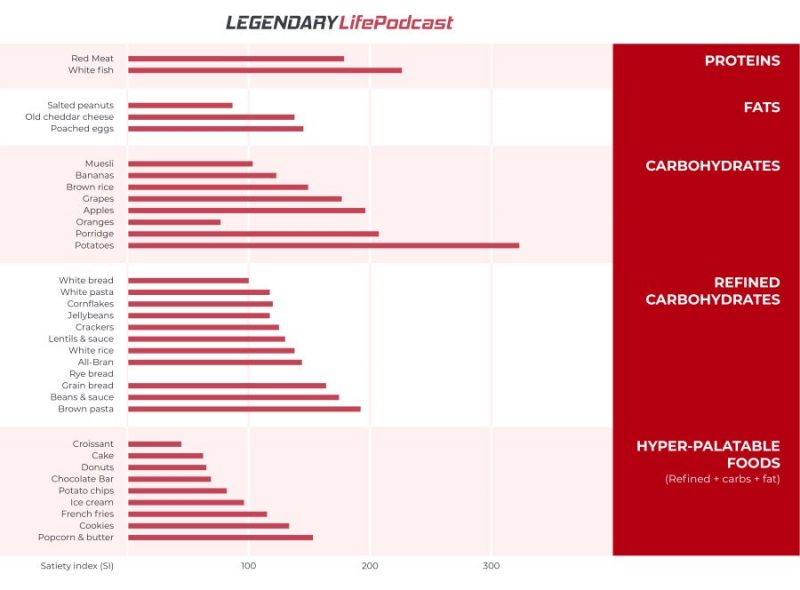
Although this was just one study, you can use it as a starting point to plan the food choices you will rely on if or when hunger becomes an issue.
You will find lots of these graphs online, but I like the ones that separate the food categories:
- Proteins
- Fats
- Carbohydrates
- Refined carbohydrates
- Hyper-palatable foods – defined as refined+carbs+fat
Let’s look at a few points of great interest here:
- Proteins and carbohydrates are the two categories with the most satiating foods of those tested.
While you may not see some of your favorite foods here, you probably do see some that you eat or maybe want to eat but have been avoiding.
- Perhaps you thought you should stay away from oranges because fruit has sugar, and sugar makes you fat. But now you can see it is great for satiating your hunger.
- Perhaps you were avoiding potatoes, but look how high boiled potatoes score!
- Hyper-palatable foods are the category that scores worst for satisfying hunger. This category includes croissants, cakes, donuts, chocolate bars, potato chips, ice cream, French fries, cookies, popcorn, and butter.
- Often, those who are determined to cut out carbs, do not realize that it’s the fat in the cakes, donuts, chocolate bars, potato chips, and so on that accounts for the majority of the calories.
- Check the nutrition ingredients on the labels, and you will understand what I’m saying is correct.
- Fat = 9 calories/grams, Carbs = 4 calories/gram
- You can see that boiled potatoes perform best for satiating hunger. By having a boiled potato or two with some white fish or red meat, you could be setting yourself up to be satisfied. (Chicken also performs well – I imagine within a similar range to red meat and white fish.)
So, potatoes were the best food for satisfying hunger, croissants the worst.
But I’ll let you into a secret – I love croissants. Likewise, bread with butter topped with chocolate! The problem is, I could eat two or three croissants in one sitting, and they have around 300 calories each. So, I could sit there, eat three croissants, feel like crap afterward, having eaten 900+ calories – and still feel hungry!
And that is why we talk about calories.
- Now back to the potatoes again and the effect of processing:
- You can see how high boiled potatoes score on this Satiety Index.
- Now, look at French fries.
- Look how the satiety properties change when we take those potatoes, cut them into fry shapes, and fry them in oil to make French fries.
Frying and oil add calories from fat. Even when taken out of the oil, a lot of fat stays with the French fries and gets eaten. And because this is hyper-palatable – refined+carbs+fat – it is not going to help your hunger as much.
- Look at potato chips. The potato – sliced and fried to make potato chips – now scores even lower for helping your hunger than French fries! It is still the same food, potatoes, but the processing has a dramatic effect on satiety.
- Look at fruit, potatoes, porridge, oranges, apples, grapes, bananas. Look at some of the refined carbohydrates, the brown pasta, beans, and sauce, grain bread, rye bread, and long-grain white rice. They are not terrible. The fruits score higher, especially the oranges and apples, but white bread and white rice does not score that poorly – it is decent for satiety. Whereas all the items in the hyper-palatable category, except for popcorn and butter, score extremely low for satiety.
Ask yourself:
- What am I taking away from this?
- What stands out to me that is relevant to my food choices and my struggles with hunger?
These are the questions to answer to get results. These are the things to study around food choices when trying to stick to your calories and finding yourself hungry. This is how you get rid of hunger!
Two more quick tips:
- Drink more liquid and make soups – this increases the volume of the food.
- Eat more vegetables – nobody overeats vegetables, right?

Step #6 – Troubleshooting
In terms of troubleshooting, there are two main problems to cover:
Problem #1 – Not Losing Weight
If, for example, you have your calories dialed in, your protein dialed in, and you’re hitting your calories more or less within that hundred calories. You’re getting closer to your protein target – my clients often find hitting this target a challenge – making a concerted effort and getting better all the time.
But despite all this, you are not losing weight, and it’s starting to freak you out.
You’re thinking: Ted was wrong, he doesn’t know what he’s talking about. He’s just another dumb-ass podcaster who said that he had the answer, and here I am doing everything right, and it’s not working!
Here are some questions for you:
- How long have you been following the plan? That is the first question because you might be impatient or have unrealistic expectations.
I tell people: If you lose on average a pound a week on your own, that is good progress. If you’re losing more than that, great for you!
(For the best results, you may need to work with a professional, but by using this on your own, you can get started and still see results.)
This one pound a week on average could mean, for example, losing two pounds the first week, none the second week, and one pound the third week. It might vary a little – keep that in mind.
- If not losing weight, are you losing inches?
Because if you are training with weights and losing inches but not weight, you’re putting on muscle. And that is a great thing!
You can’t use weight as a sole measure. I recommend you track your results in a variety of ways. These might include:
- Taking before and after photos.
- Taking measurements of your waist.
- Using your clothes as a guide. Are they fitting looser or not?
And finally, if you have gone through all these things and you are still not losing weight, and it is maybe a month into it, then it is time to drop your calories down by a hundred.
The reason for this is that the measurements may be off:
When you track your food with MyFitnessPal or write it down on a spreadsheet, you are not scanning the chicken breast you ate, you’re going by some pre-made data that is within the realm of being right.
So, drop your calories down by a hundred and keep going! See if that gets you moving in the right direction.
If it doesn’t work after one month, try, perhaps another month.
You might need to play around with this. If you don’t lose any weight and you dropped it down to a hundred for a week, and you still haven’t lost any weight, drop it another a hundred and give it a couple of weeks.
If you are gaining weight and not losing inches, you’re going to have to drop your calories down. Remember, these things may take time and experimentation.
There is always a way to make sure that you can lose body fat or weight, and it is by adjusting the numbers.
It works 100% of the time for every single person. You will get to a place where you are losing weight.
Problem #2 – Hunger
Now, let’s talk about hunger.
For some people, they’re losing weight, following the calorie recommendations, hitting their protein target more or less – but they feel like they are starving.
If you experience this, you may not be eating enough calories, or you may be exercising too much.
Exercise can stimulate hunger. So, if you are exercising like crazy in the hope that will make things move faster, you are increasing your body’s energy requirements and it is now sending out hunger signals.
You cannot do the spinning class and yoga class and go powerlifting, the five-three-one method, or five-by-five method, and expect to eat what you are eating on this plan. You can either eat more calories or reduce your exercise.
Also, if you are struggling with hunger, look at the foods you are choosing, and make better choices using the Satiety Index.
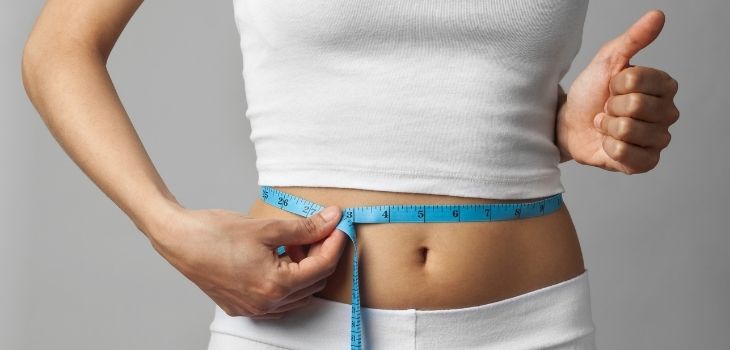
Ready to Successfully Lose Weight and Transform Your Life?
If you are still reading this, I reckon you are beyond expecting a quick fix.
You want a program that works. You are prepared to invest in yourself (because that is what this is, an investment) and get educated in food and weight loss.
Make no mistake – this is not like getting your weekend certification in nutrition (which is what a diet plan is). This is like doing your executive MBA.
You are learning the science of weight loss. You’re figuring out the numbers, making them work, and putting in the effort.
There is no easy way to lose fat, but this is the easiest way.
Seriously, what seems easy in the short term ends up being the hard way long term.
And what seems hard at first – in case you view this as difficult – is the best way in the long term.
Stick with it, and you will see results!
Let me know how you get on in the comments below. Upload your before and after shots there too! It’s time to be inspiring…



